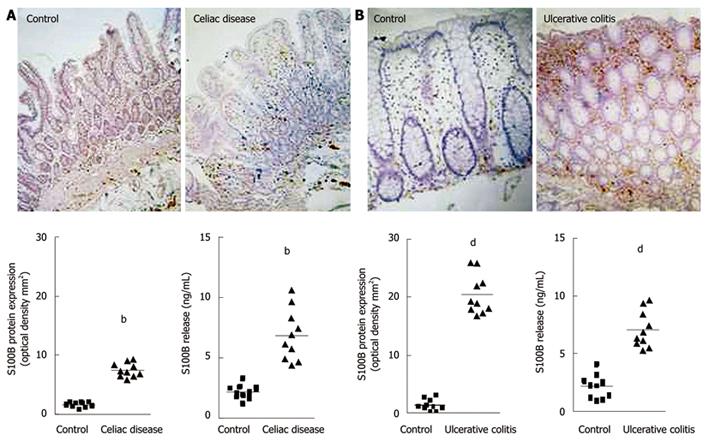Copyright
©2011 Baishideng Publishing Group Co.
World J Gastroenterol. Mar 14, 2011; 17(10): 1261-1266
Published online Mar 14, 2011. doi: 10.3748/wjg.v17.i10.1261
Published online Mar 14, 2011. doi: 10.3748/wjg.v17.i10.1261
Figure 1 Changes in S100B protein expression during intestinal inflammation.
A: Celiac disease[13]. Immunohistochemistry shows stronger S100B immunopositivity in the duodenal mucosa of patients affected by celiac disease, compared with healthy controls (original magnification, × 100). The graphs represent S100B protein expression (left) and release (right) in healthy controls and patients with celiac disease (bP < 0.01); B: Ulcerative colitis[14]. Immunohistochemistry shows stronger S100B immunopositivity in the rectal submucosa of patients with ulcerative colitis, compared with healthy controls (original magnification, × 100). The graphs represent S100B protein expression (left) and release (right) in healthy controls and patients with ulcerative colitis (dP < 0.01).
- Citation: Cirillo C, Sarnelli G, Esposito G, Turco F, Steardo L, Cuomo R. S100B protein in the gut: The evidence for enteroglial-sustained intestinal inflammation. World J Gastroenterol 2011; 17(10): 1261-1266
- URL: https://www.wjgnet.com/1007-9327/full/v17/i10/1261.htm
- DOI: https://dx.doi.org/10.3748/wjg.v17.i10.1261













